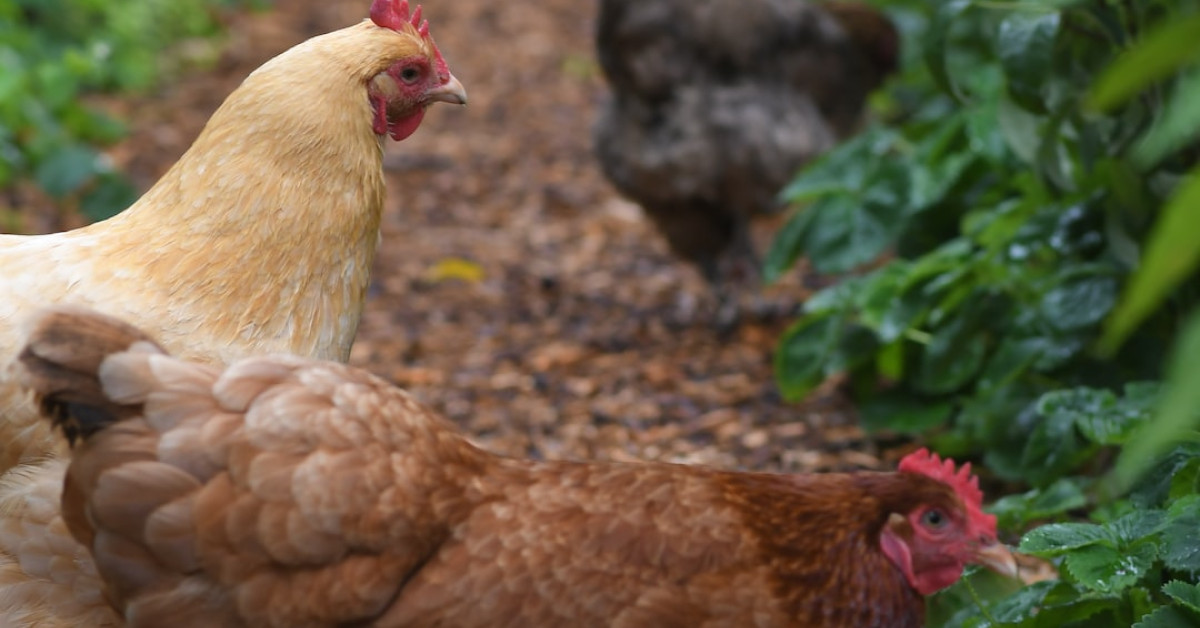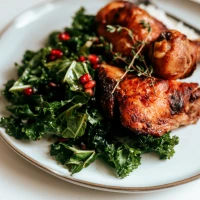Baked chicken thighs cooked at a moderate temperature of 350°F achieve that ideal balance of crispy skin and tender, juicy meat. When paired with a vibrant vegetable medley, these chicken delights become the centerpiece of a scrumptious dinner. Embarking on a culinary journey, we’ll explore the intricacies of seasoning, the secrets of a perfect bake, and how to complement your baked chicken thighs with the best vegetable partners. Get ready for a mouthwatering experience that is not only delectable but also infused with the benefits of hearty, nutritious veggies.
Optimizing Your Bake: Chicken Thighs at 350
Achieving succulent chicken thighs starts with understanding the art of baking them at the optimal temperature. Baking chicken thighs at 350°F is the golden standard for a reason – it’s the perfect compromise between gentle cooking and crispy outcomes. Here’s why baking at 350 degrees Fahrenheit is the key to perfection:
The Magic of 350°F
Baking chicken thighs at a moderate temperature like 350°F ensures even cooking. The gentle heat allows the fat under the skin to render slowly, basting the meat in its own juices, resulting in chicken that is incredibly moist and flavorful midnight black copper maran.
Seasoning and Prep for Flawless Chicken Thighs
Before they hit the oven, seasoning your chicken thighs is crucial. A combination of salt, black pepper, garlic powder, and herbs like rosemary and thyme can work wonders. For an extra kick, a dash of smoked paprika adds a subtle warmth that pairs beautifully with the natural flavors of the chicken.
Marinating: A Deep Dive into Flavors
For those looking to take their chicken thighs to the next level, a marinade can infuse them with a depth of flavor that dry seasoning alone cannot. Consider a mix incorporating olive oil, lemon juice, and your favorite herbs and spices. Allow the chicken thighs to bathe in this marinade for at least an hour or overnight for a punchier taste profile.
The Ultimate Guide to a Vegetable Medley Match
The side dish can sometimes overshadow the main attraction. Picking the right vegetable medley to accompany your baked chicken thighs is an art form. Let’s break down some top choices that will elevate your poultry to a heartwarming meal:
Roasting Roots to Perfection
Root vegetables have a natural sweetness that intensifies when roasted. They become soft and caramelized, adding a layer of comfort to your meal. Here’s a selection of root veggies that marry well with chicken cooked at 350°F:
- Carrots: Their natural sweetness complements the savory flavors of the chicken.
- Beets: Their earthy tones and vibrant color add visual and flavor contrast.
- Sweet Potatoes: They bring a creamy texture and a hint of sweetness that’s irresistible.
Perfect Pairing: Herbs and Spices
To tie your vegetable choices together, consider the herbs and spices that will enhance their natural flavors. Rosemary, thyme, and a hint of garlic work magically with root vegetables. A sprinkle of sea salt and a drizzle of olive oil before roasting will ensure a crispy, golden exterior.
Green and Serene: Leafy Additions
Leafy greens like kale, spinach, and Swiss chard wilt down to a wonderfully tender texture when cooked. Here’s how to incorporate them into your baked chicken dinner:
- Kale: Rough chop and sauté with garlic for a robust side.
- Spinach: Lightly steam to preserve its delicate flavor.
- Swiss Chard: Sauté with onions for a hearty and rustic complement.
The Crunch Factor: Nuts and Seeds
The addition of toasted nuts and seeds to your greens can take a simple sauté to new heights. Pine nuts, sliced almonds, or even sunflower seeds add a delightful crunch and a boost of nutrition.
Crafting the Perfect Pairing: Tips and Techniques
Achieving Harmony: Flavor Balancing
Bold flavors can either clash or complement. For a seamless dining experience, think about how the flavors will interact. Your chicken thighs might be the star, but the right vegetable medley will play a supporting role that enhances the overall dish without overpowering it.
Technique Mastery: Cooking Methods Matter
Roasting, sautéing, or steaming – each cooking method lends itself to different vegetables. Understanding which technique suits which vegetable is key to perfecting your pairing:
- Roasting intensifies and sweetens flavors.
- Sautéing adds depth with a slight crispness.
- Steaming preserves the vegetable’s natural essence and texture.
Textural Contrast: A Sensory Delight
Underlined text invokes emphasis and attention in writing, just as contrasting textures do in your dish. Consider how the creamy inside of your baked chicken thighs will feel against the slight crunch of roasted brussels sprouts or the velvety smoothness of a pureed butternut squash.
Making Every Bite Count: Uniform Cooking
Ensure that each piece of vegetable is cut uniformly for even cooking. This attention to detail can be the difference between good and great when it comes to achieving the perfect roast or sauté.
Marrying Flavors: Seasonal Sensations
Spring into Flavor: Artisanal Asparagus
With spring comes asparagus, a vegetable that, when roasted to tender-crisp perfection, can brighten your chicken thigh pairing. Season with lemon zest and a light sprinkle of Parmesan for a refreshingly zesty side.
Freshness Overload: Zucchini and Squash Medley
Zucchini and squash offer a freshness that pairs well with the savory baked chicken. Whether spiralized into noodles or chopped and roasted, they provide a light contrast to the dish.
The Fall Harvest: Squashes and Pumpkins
As the weather turns cooler, the warmth of butternut squash and pumpkin brings a hearty dimension to your chicken dinner. These winter vegetables, when roasted with a touch of cinnamon and nutmeg, offer a festive flare.
Colorful Compositions: Bell Peppers and Eggplant
Never underestimate the power of color in your baked chicken and vegetable medley. Red, yellow, and green bell peppers, alongside purple eggplant, create a visual feast that’s as enticing as the flavors they bring to the palate.
Enhanced Experience: Dressing and Garnishing
The Final Touch: Fresh Herbs and Citrus
Before serving, a garnish can elevate your dish from home cooking to restaurant-level quality. A scattering of fresh herbs like parsley or cilantro, along with a squeeze of fresh lemon or lime, can bring a brightness that ties all the elements together.
Drizzle for Days: The Right Oils and Vinegars
A good quality extra-virgin olive oil or a drizzle of balsamic reduction can add layers of flavor to your vegetable medley. These finishing touches can heighten the taste and elevate the dish as a whole.
A Culinary Conclusion: Baked Chicken Thighs and Vegetable Medley Mastery
In the quest for a scrumptious dinner, baked chicken thighs at 350°F showcase a symphony of textures and flavors that awaken the senses. Mastering the art of the perfect chicken bake requires attention to seasoning, marinades, and cooking times. Pairing this poultry perfection with a lush vegetable medley cultivated by variety, freshness, and technique transforms an everyday meal into a celebration of taste.
By considering harmonious flavor balances, cooking methods, and the seasonality of vegetables, you’ll not only satiate your appetite but also nourish your body with a plate brimming with vibrant colors and nutrients. Bearing in mind the final touches such as dressings and garnishes, the baked chicken with vegetable medley promises a dining experience that will linger in your memory and tantalize your tastebuds.
Whether you’re a seasoned chef or a home cook looking to impress, this guide ensures you perfectly bake your chicken thighs and craft the ultimate vegetable medley, ensuring every dinner is not just a meal but a masterpiece.










